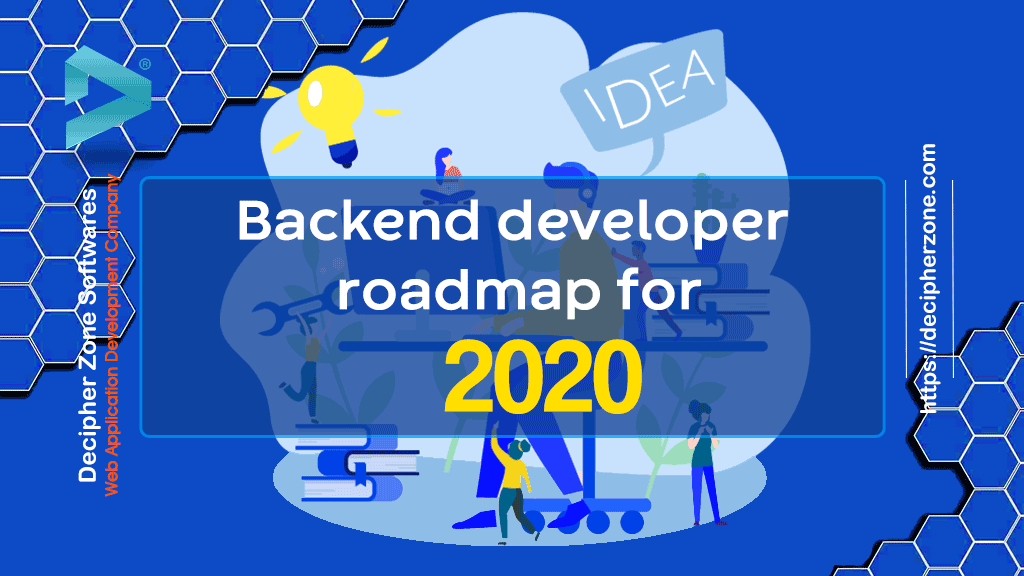
In the era of internet-based mobile and web applications, the high reliance on powerful cloud servers and cheaper handheld or portable computing devices have increased the mankind’s accessibility over powerful applications at a cheaper cost. On the other end, dependency on backend computing tasks has grown exponentially that created an ocean of opportunities for backend developers.
2020 Backend Developer Roadmap
Backend developer roadmap for 2020 learnings is immensely deep which needs a lot of topics to be covered. Although we will cover some topics in this blog for the rest, we will provide a list that’s either already linked to blogs on those topics or we will be more detailed writing blogs on them.
Basic Frontend Knowledge
For frontend knowledge please refer to our previous blog “Frontend developer roadmap for 2020”
Data structure and OS concepts
Data structure and operating system concepts are key criteria’s that extract the best performance out of your code at the minimal expense on hardware so you must learn it in under your backend developer roadmap for 2020.
Here’s a list of some concepts that you must learn:
- Time Complexity
- Space Complexity
- Memory Management
- Process Management
- Inter-Process Communication
- Threads handling
- Concurrency Management
- Using Terminal and its basic operations
- Common Conflicts with Operating System dependencies
Databases
For databases please refer our previous blog “Database Developers roadmap for 2020”
Caching
Caching is saving some data of web applications in local storage and later on referring this data. If any sort of data is being recursively used then developers save it on local storage and then refer to this data when next time it is requested by the application.
Caching helps in enhancing user experience by reducing the latency in rendering the application. The data can be saved on the following 3 locations depending on where latency will be minimum in that use case.
Although caching helps in enhancing user experience but it must be noted that that the data which needs to be secured is not cached.
1. Server Side
Server-side caching is usually done for data that is being pulled from a third-party resource or integration. For example, web designers add fancy fonts and components that are pulled from a third-party website so in such use case this data can be cached on server to reduce the latency in rendering application on the client system.
2. Client-Side
Client-Side caching is usually done for design-related images, CSS and js files. Client-side caching is most widely used in developing applications.
3. CDN
CDN (Content Delivery Network) are clusters of geographically distributed servers which are responsible for routing requests from the client machine to the closest server for delivering content with minimum latency.
The CDN pulls data from the global server periodically and this data is cached on CDN servers to quickly fulfil the data request from the client machine.
Read: Top 10 Backend Frameworks for Web Development in 2020
Most Popular Backend tech stack
The trending mobile and web applications are designed in such a way that most of the application processing is done with backend and little processing is done on the end user’s device to make it accessible all types of computing devices.
In short, the applications developed in this era heavily rely on backend hence choosing the right tech stack derives the development speed and performance to a very large extent. Here are some of the most popular languages to develop backend:
1. Java
Java was developed, maintained and released by oracle in 1995. It is an object-oriented programming language that is most popular in the world as it offers great features in developing high-security web applications.
Since it is quite old and was developed by a large tech corporation, a huge community was evolved. The tons of open source libraries available in java fast track the backend application development beyond anyone’s imagination.
2. Node Js
Node js was launched less than a decade ago but it is built on top of JavaScript and NPM libraries. Node js is also an object-oriented programming language that offers blazingly fast performance but quite fewer security features as compared to java. Hence it must be there in our backend developer roadmap for 2020.
3. Laravel
Laravel is an opensource framework of PHP and it is based on the symphony. Laravel follows MVC (Model View Controller) architecture pattern Laravel offers robust job processing with database ORM, fast routing engine, and many more features. Although the security of Laravel is not as good as java these days it is as popular as node js.
#technology #coding #backend-development #web-development #roadmaps
